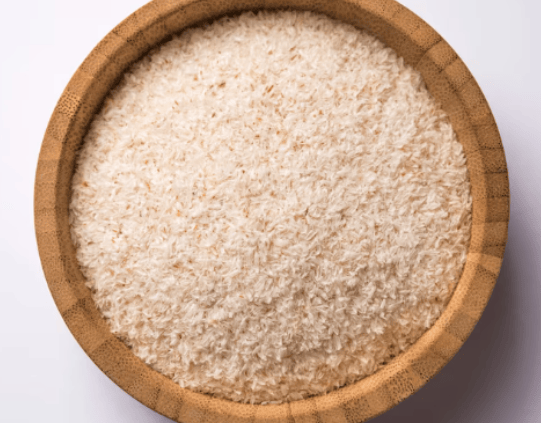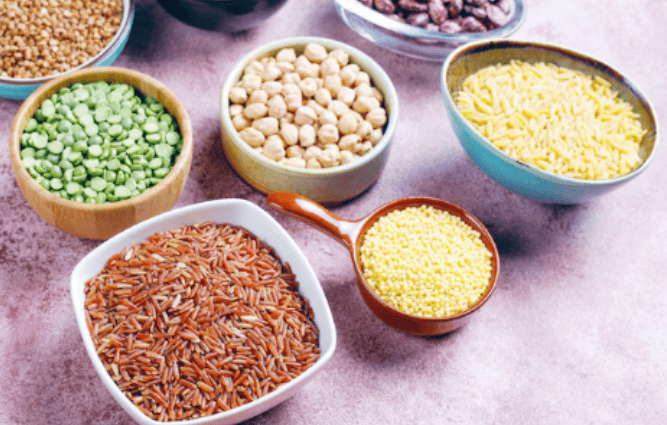If you’re trying to keep your heart healthy, cholesterol is one number you don’t want to ignore. High levels of LDL (or “bad”) cholesterol can raise your risk of heart disease—the leading cause of death worldwide. But here’s the good news: what you eat can make a big difference.
One of the most powerful tools for managing cholesterol is fiber, especially the soluble kind. Soluble fiber acts like a sponge in your digestive system, soaking up LDL cholesterol and helping your body flush it out naturally. It’s a simple, natural way to support heart health—without relying solely on medication.
In this article, we’ll cover five proven high fiber foods for lower cholesterol. Each one is backed by research and easy to add to your daily meals. Whether you’re already watching your cholesterol or just looking to take better care of your heart, adding more fiber is a smart and sustainable step.
How Fiber Helps Lower Cholesterol
You’ve probably heard that fiber is good for your heart—but how exactly does it work? When it comes to managing cholesterol, soluble fiber is the real hero.
Soluble fiber dissolves in water and forms a gel-like substance in your digestive tract. This gel binds to cholesterol particles, particularly LDL (low-density lipoprotein), and prevents them from being absorbed into your bloodstream. Instead, the cholesterol gets carried out of your body as waste. Over time, this process can lead to lower total cholesterol and improved heart health.
This is why there’s such a strong link between fiber and cholesterol levels. Research shows that eating just 5 to 10 grams of soluble fiber per day can lower LDL cholesterol by up to 5–10%.
In addition to its cholesterol-lowering effects, soluble fiber also supports gut health by feeding beneficial bacteria. A healthier gut may help reduce inflammation and regulate blood sugar—two more important factors in preventing heart disease.
You’ll find soluble fiber foods in a variety of plant-based sources, including oats, legumes, fruits, and vegetables. They’re not only heart-friendly but also promote overall wellness.
5 High-Fiber Foods for Lower Cholesterol
Looking to lower your cholesterol naturally? One of the most effective strategies is to add more soluble fiber to your diet. Soluble fiber binds to cholesterol in the digestive tract and helps remove it from the body—making it a key player in any cholesterol lowering diet.
Here are five of the best fiber foods for heart health, backed by science and easy to include in your meals.
1. Oats
Oats are a true heart-health hero. They’re packed with beta-glucan, a type of soluble fiber that has been shown in numerous studies to lower LDL (bad) cholesterol levels.
According to the FDA and American Heart Association, consuming at least 3 grams of beta-glucan daily (about 1.5 cups of cooked oatmeal) can significantly reduce cholesterol over time. Beta-glucan also slows digestion, stabilizes blood sugar, and helps you feel full longer.
Easy ways to enjoy oats:
- Classic hot oatmeal with fruit and nuts
- Overnight oats with chia seeds and berries
- Add oat flour to smoothies or baked goods
2. Beans & Lentils
Beans, lentils, and other legumes are nutritional powerhouses and some of the richest plant-based sources of soluble fiber. Just 1 cup of cooked beans can provide up to 6–8 grams of fiber, including the kind that helps reduce cholesterol and support blood sugar stability.
Studies have shown that regularly eating beans and lentils can lower LDL cholesterol and triglyceride levels while improving overall cardiovascular health. They’re also rich in plant-based protein, iron, and resistant starch, all of which support gut and heart health.
Delicious ways to eat legumes:
- Add to soups, stews, or chili
- Toss into salads or grain bowls
- Blend into hummus or bean dips
3. Apples
An apple a day really can help keep the doctor away—especially when it comes to cholesterol. Apples are a great source of pectin, a type of soluble fiber that binds cholesterol and helps flush it from the body.
Research shows that eating apples daily can modestly reduce LDL cholesterol, while also improving gut health thanks to their prebiotic fiber. Plus, apples are portable, affordable, and require no prep.
Simple ways to enjoy apples:
- Eat raw as an easy snack
- Slice over salads or into oatmeal
- Bake with cinnamon for a healthy dessert
4. Barley
Barley is often overlooked, but it’s one of the most effective grains for lowering cholesterol. Like oats, it contains beta-glucan, which helps reduce total and LDL cholesterol levels.
Barley has a chewy texture and nutty flavor, making it a great substitute for rice or pasta. It also offers long-lasting energy and supports blood sugar control.
Tasty barley meal ideas:
- Add to soups and stews
- Serve in grain bowls or pilafs
- Mix with roasted vegetables and herbs
Choose hulled or pearl barley for maximum fiber content.
5. Psyllium Husk

If you’re looking for a concentrated source of soluble fiber, psyllium husk is one of the best. Just 1 tablespoon provides around 5 grams of soluble fiber, and multiple clinical trials confirm that psyllium helps significantly lower LDL cholesterol when consumed daily.
Psyllium also helps relieve constipation and promote digestive regularity—but it must be introduced slowly to avoid bloating and discomfort.
How to use psyllium husk:
- Stir into smoothies or yogurt
- Mix with water or juice (drink immediately)
- Sprinkle into oatmeal or cereal
Always follow it with a full glass of water to prevent digestive issues.
A high-fiber diet is one of the easiest and most natural ways to support your heart. Incorporating these best fiber foods for heart health—like oats, legumes, apples, barley, and psyllium—can help you lower cholesterol, improve digestion, and feel more energized.
Tips for Adding More Fiber to Your Diet
Starting a fiber-rich diet plan doesn’t have to be overwhelming. With a few simple shifts, you can boost your fiber intake—and support lower cholesterol—without sacrificing flavor or convenience.
First, take it slow. Rapidly increasing fiber can cause bloating or discomfort, so aim to add just one new high-fiber food at a time. As your body adjusts, you’ll feel the benefits more comfortably.
Hydration is key. Fiber needs water to move smoothly through your digestive system. So, every time you eat a fiber-rich meal, drink a full glass of water to help things flow.
Mix it up! Combine different sources of fiber—like whole grains, fruits, vegetables, legumes, and seeds—to get a variety of nutrients. This balance also supports a healthier gut microbiome, which plays a role in cholesterol regulation.
Looking for easy swaps in your cholesterol-friendly diet? Try oatmeal instead of sugary cereal, use beans or lentils in place of meat a few times a week, or enjoy fruit instead of dessert.
Even small changes—done consistently—can have a big impact. Start with what feels manageable, and build from there. Your heart will thank you.
FAQs About Fiber and Cholesterol
How much fiber do I need daily to lower cholesterol?
The American Heart Association recommends 25 to 30 grams of fiber daily, with at least 5 to 10 grams coming from soluble fiber. Research shows that this amount can lead to a noticeable drop in LDL (“bad”) cholesterol over time.
Can I lower cholesterol with fiber alone?
While fiber and cholesterol are closely linked, fiber alone isn’t a magic fix. A balanced, heart-healthy lifestyle—including regular physical activity, healthy fats, and limiting processed foods—will give you the best results. That said, adding more fiber is a great first step that delivers real benefits.
What’s the difference between soluble and insoluble fiber?
Soluble fiber dissolves in water and forms a gel that binds to cholesterol and slows its absorption. It’s found in foods like oats, beans, apples, and barley. Insoluble fiber, found in whole wheat, vegetables, and nuts, helps with digestion but doesn’t directly lower cholesterol.
Are fiber supplements as effective as food sources?
Fiber supplements like psyllium can help lower cholesterol, especially when taken regularly. However, soluble fiber foods offer more than just fiber—they’re packed with vitamins, antioxidants, and other nutrients you won’t get from a pill or powder. Whole foods are usually the better long-term choice.
Conclusion
Supporting healthy cholesterol doesn’t have to be complicated. A fiber-rich diet is one of the most effective—and natural—ways to protect your heart. By simply adding more high fiber foods for lower cholesterol to your routine, you’re taking meaningful steps toward better health.
The five foods we covered—oats, beans, apples, barley, and chia seeds—are easy to enjoy, affordable, and packed with nutrients. Whether you add them to breakfast, lunch, or dinner, they fit seamlessly into everyday meals.
Remember, the key is consistency. You don’t need a total diet overhaul—just small, steady changes. Over time, these habits can lead to real improvements in cholesterol levels and heart health.
Start today with one simple swap. When it comes to foods to lower cholesterol naturally, fiber is your best friend—and your heart will thank you for it.
